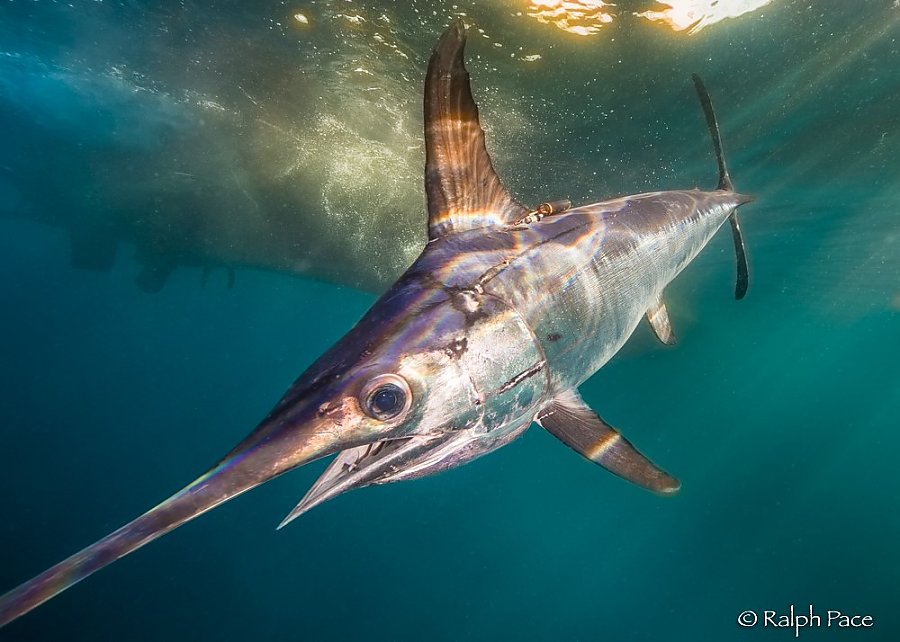
Ralphs
Discount tickets available at Ralphs for a limited time
Biology and Population

Credit: © Ralph Pace Image subject to copyright. Permission required to use this image.
Swordfish are one of the fastest predators in the ocean. They are a large, highly migratory fish, found in temperate and tropical oceans worldwide.
As their name implies, they are easily identified by their long, flattened, sword-like bill. Their bodies are stout and rounded, with a broad, crescent-shaped tail. They are darkest in color on the top of their bodies, generally black or brown.
With a primary diet of fish and squid, swordfish grow quickly. They reach maturity at five to six years of age, when they are about 5 feet long.
They can live up to twelve years, and they can reach a maximum length of 14 feet and nearly 1,200 pounds. The average size of the swordfish caught in the fishery on the U.S. West Coast is between 50 and 200 pounds.

There are two stocks of North Pacific swordfish: one in the Eastern Pacific and one in the Western & Central North Pacific.
The most recent stock assessment by the The International Scientific Committee for Tuna and Tuna-like Species in the North Pacific Ocean was completed in 2014. The assessment found the Western & Central North Pacific stock is not overfished and is not subject to overfishing. The same assessment found the Eastern Pacific stock is not overfished, but is subject to overfishing.
This means that there were periods of time between 1998 and 2012 that the harvest rate was too high, which if continued, may lead to an overfished stock. U.S. catch contributes very little to the overall fishing rate, but remains one of the best managed sources. Scientists and representatives from U.S. regulatory agencies participate in discussions for international regulatory actions to address overfishing.


Discount tickets available at Ralphs for a limited time